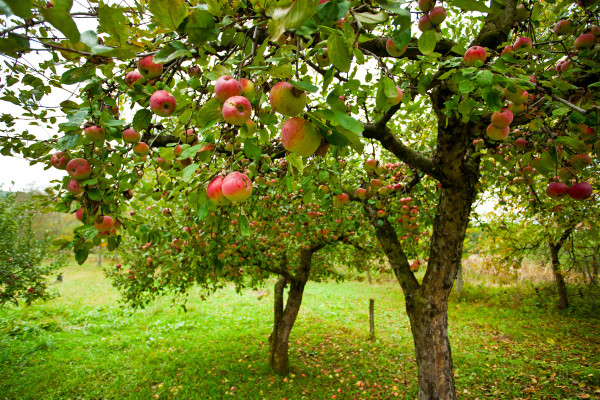In early summer it’s natural for apple trees to shed some fruit, it’s commonly known as ‘June drop’. But if it is more extreme, there may be an underlying problem. On the other hand, the drop leaves strong fruit on the tree to develop further.
Why is the tree affected?
Generally, June drop isn’t a worry. Instead, it’s a natural process because the trees can only hold so many fruits.
However, it’s important to bear in mind the age of the tree because younger trees tend to drop more fruit. Then, as they establish and mature, there should be less fruit dropping naturally.

How to prevent natural dropping of apples
At this time of the year, apple trees naturally shed excess fruit so don’t be alarmed if you see young apples falling to the ground. This is known as the ‘June drop’ and usually occurs at this time of the year when the tree sheds surplus fruit. It can also occur if the weather has been bad after flowering and/or there has been poor pollination of the fruit.
You can prevent this by pruning to allow plenty of light and air circulation into the rest of the tree. It can also be prevented by ensuring the tree is getting the right balance of nutrients. The plant will benefit from nitrogen, so add a well-balanced liquid fertiliser in later winter or early spring to boost before growing season. On the other hand, it’s important to not over feed the plants because too much nitrogen can lead to dropping fruit too.
A lack of water can also be a factor resulting in fruit dropping. So, ensure the tree is sufficiently watered and maintained. Watering and then mulching during the spring will help to retain moisture and decrease the likelihood of fruit falling.

Feeding apples
Feed fruit trees in later winter or early spring, first ensuring that the soil is moist. Depending on where the tree is situated with impact how it is fed. For instance, if the tree is planted within grass, it’s best to remove a ring of about 1m wide around the base so there is sufficient space to feed for the fertiliser to soak into the soil towards the roots. Once the grass has been removed, the soil should be lightly forked to break it up and loosen the space slightly.
Apply the fertiliser to the area that falls under the plants canopy, following the instructions on the specific feed, whether granular or liquid.

Proper pollination
One potential reason for fruit dropping is insufficient pollination. A solution to this problem is to ensure there are plenty of pollinators within the area. Attract them by encouraging beneficial insects like bees and butterflies to the garden by planting pollinator friendly flowers in the space.
Lavender, dahlias, wallflowers, foxgloves, and Verbena bonariensis are all great options to plant to give pollinators are warm welcome.

Thin out congested apples
Cut small fruits off branches to leave one approximately every 10-15cm. Leave one apple per cluster, removing the rest to leave the strongest to develop – this is also when to remove any that are diseased or damaged using clean secateurs.
Doing this will offer a bigger, healthier harvest. Thinning out apples also makes it easier for fruit to ripen in the sun. Meanwhile it also reduces the risk of branches snapping under the heavy weight of a large harvest.

Leave A Comment